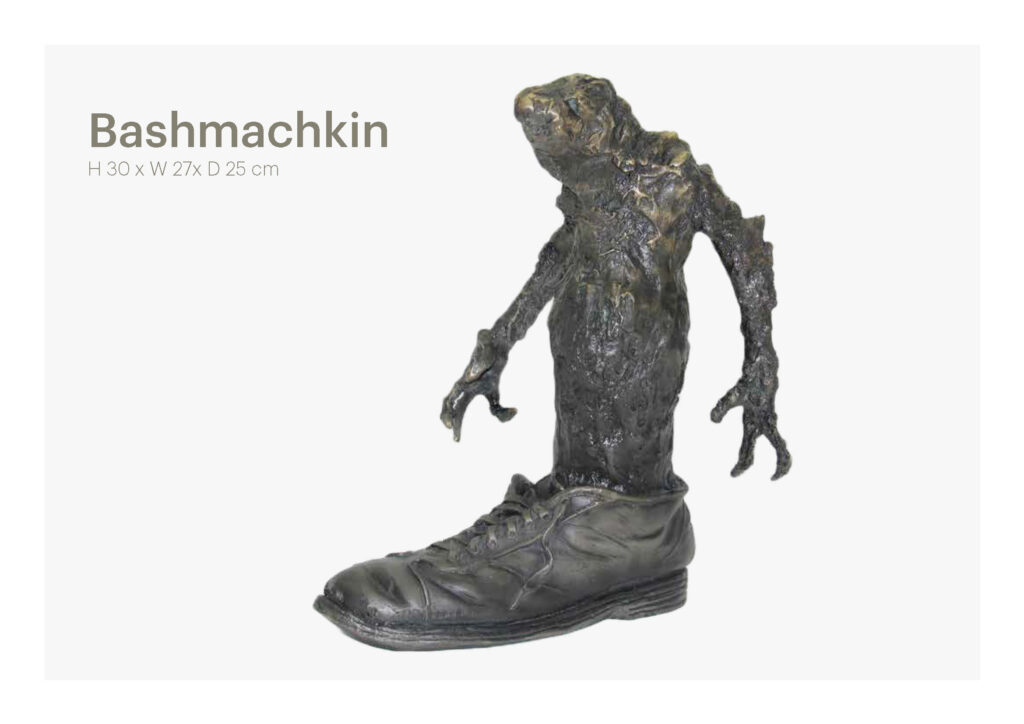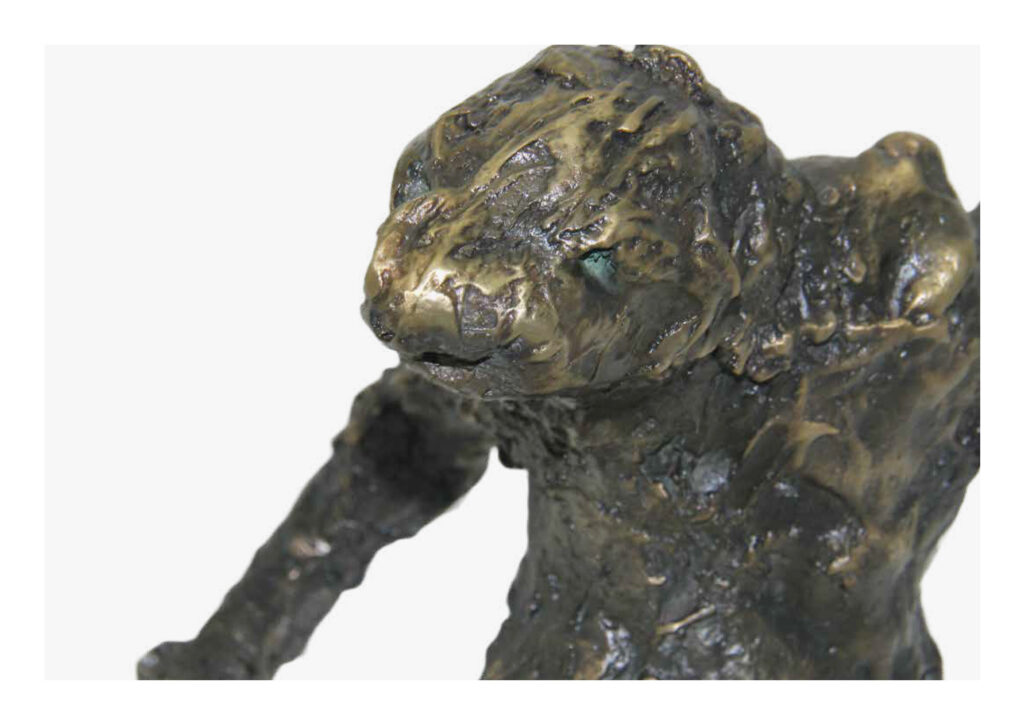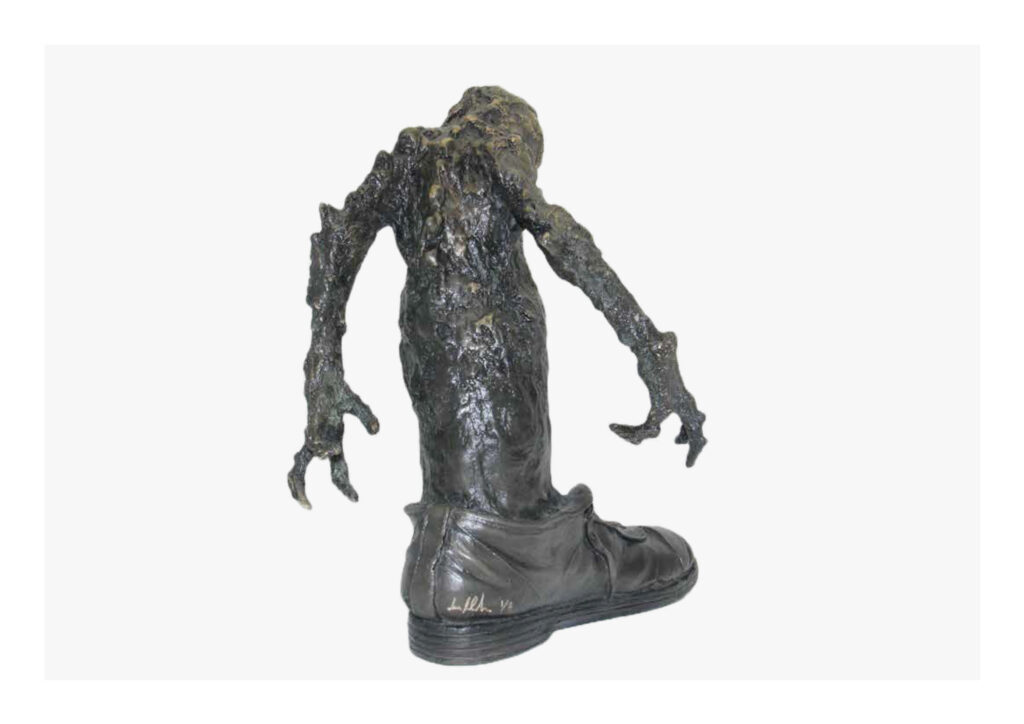Listen to Curatorial Text • Read Curatorial Text
Music: Concerto for Violoncello and Orchestra “Diary of a Madman”




In Lera Auerbach’s bronze sculpture, “Bashmachkin’s Ghost,” viewers are invited to explore a connection with Akaky Akakievich Bashmachkin, the protagonist from Nikolai Gogol’s “The Overcoat.” Auerbach captures Akaky’s transformation into a haunting spectre, embodied in a creature emerging from a shoe, symbolising his humble and monotonous life.
The shoe, resonating linguistically with the Russian word “bashmak,” represents not only his earthly life, filled with ridicule and monotony but also becomes a complex metaphor, adding another layer to the representation. The sculpture’s twisted features and half-human outstretched limbs mirror his metamorphosis from a mundane clerk to a haunting presence.
A crucial event in Gogol’s narrative is the theft of Akaky’s overcoat, traditionally a symbol of dignity, status, and humanity. Its loss exposes him, triggers his decline, and leads to his death and transformation into a ghost seeking retribution. In the sculpture, the overcoat’s significance is poignantly replaced with the shoe. This thoughtful substitution conveys Akaky’s confined and overlooked life, creating a visual narrative that intertwines the theft of the overcoat with the subsequent haunting, captured in the creature’s expression as it seeks existence beyond material constraints.
Auerbach’s “Bashmachkin’s Ghost” is an intellectual dialogue between past and present, text and form. It offers a haunting perspective on a literary masterpiece from a time marked by bureaucratic inefficiency and social rigidity, where the protagonist’s plight becomes symbolic. By reimagining Gogol’s tale through bronze and the shoe, the sculpture engages viewers in an exploration of identity, isolation, and transformation. It is a visual echo of a literary classic, deepening our connection to the universal themes in art and literature.